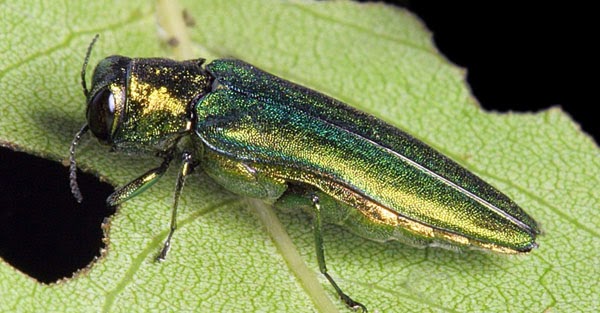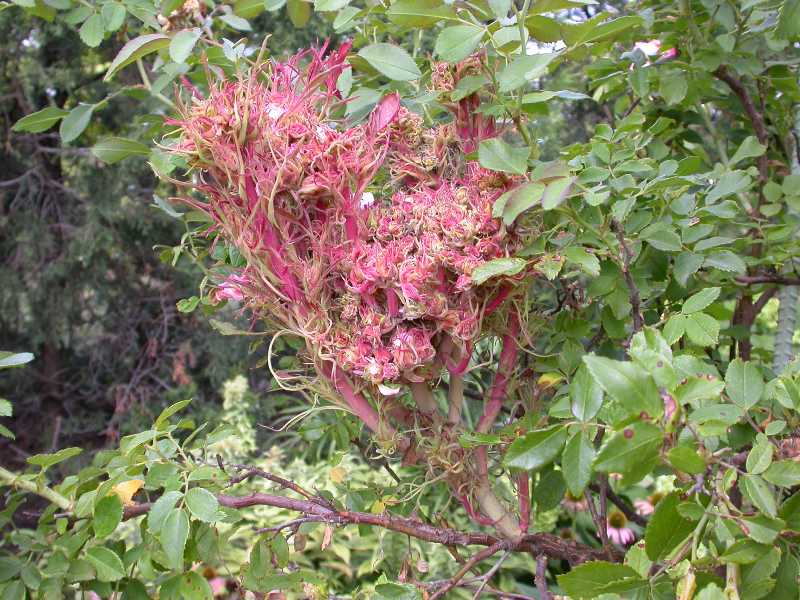
With spring right around the corner, property managers are not only looking to keep plants happy and healthy, they are also seeking to keep plants safe from invasive bugs and pests.
Pests giving us more concern this year are the emerald ash borer (often referred to as emerald ash beetle or EAB and Rose Rosette disease. You might be thinking to yourself, “I’m aware of these pests.” We agree, you likely are. However due to the extreme and strange weather El Nino threw our way this year, it’s even more important to monitor for pests.
Some areas in the south had a mild winter so bugs might not have been suppressed as much, other areas such as Northern California experienced more precipitation than has been seen in years so Here is a quick overview of the pests, what to look for and links to additional resources.
What You Should Know About Emerald Ash Borer
Emerald Ash Borer is the most recent beetle killing hundreds of thousands of all types of ash trees throughout North America. As of September 2015, the National Forest Service has reported EAB has been found in 24 U.S. states and two Canadian provinces – it’ll likely keep spreading.
What does it look like?
The beetle is metallic green, the size of cooked grain of rice, and bores into ash trees.
When should I be on the lookout for these pests? They first emerge in mid to late May. Eggs are laid shortly afterwards.
How can I tell if my ash tress have been affected?
There are several signs. Look for the canopy of your trees thinning or dying, the bark splitting, excessive woodpecker feeding, epicormic sprouting, d-shaped emergence holes, s-shaped larval galleries and larvaue and adult beetles in the tree.
What can I do to protect my trees?
There are a variety of treatment options including insecticides through soil-applied systemic, trunk-injected systemic, noninvasive systemic basal truck sprays and protective cover sprays. Remember that maintaining stable and good growing conditions and avoiding major stresses increases your chances of successfully protecting your trees.
What You Should Know About Rose Rosette Disease

Rose Rosette disease attacks rose bushes and plants, especially knock-out and multiflora roses. First detected in the U.S. in the early 1940s, the virus most recently has been found in the Carolinas, Indiana, Michigan, Ohio, Tennessee, Texas and a few other states. Its primary method of spreading is the eriophyid mite and through humans pruning and grafting.
Can I see the mite that spreads this virus?
No, these mites cannot be detected by the naked eye.
When should I be on the lookout for these pests?
The virus is mostly transmitted from May to mid-July. Infected plants will start to show symptoms by mid-July.
How can I tell if my roses have been affected?
Some symptoms include shoots and foliage have an abnormal red color, deformed buds and flowers, pradily elongating shoots, abnormal amounts of thorns and more.
What can I do to protect my roses?
There are three main recommendations: prune branches at first symptoms, apply a miticide or insecticide, or completely remove and destroy the infected plant. Smaller plants will usually be killed within two years; larger plants will survive for five years.
There are methods including insecticides that can help halt and slow down the progression of these pests. We recommend talking with your landscape management company to outline a plan that incorporates appropriate monitoring and integrated pest management (IPM).
IPM evaluates each individual tree’s health and current situation. This system accounts for the tree’s species, size, location, age and more. By examining those factors, property managers will be able to independently evaluate and treat each tree while minimizing the use of chemicals thus reducing the risks to people and the environment.
To supplement the loss of trees and plants affected by pests, property and community managers need to consider diversifying the tree and plant species on their properties.
Related links:
How you can fight emerald ash borer infestation
Emerald Ash Borer Information Network
What is Integrated Pest Management (IPM)?
Rose Rosette Disease
Rose Rosette Disease
Peter Evers is a certified arborist and plant health care manager at Terracare Associates. Previously, he’ worked for various tree and landscape companies including Swingle Tree Company, Denver Tree Specialists, and Arbor Garden Tree & Landscape. He also served as President for the Rocky Mountain chapter of the International Society of Arboriculture.
Contact us to find out how TCA can help you protect your plants from these landscape pests.
